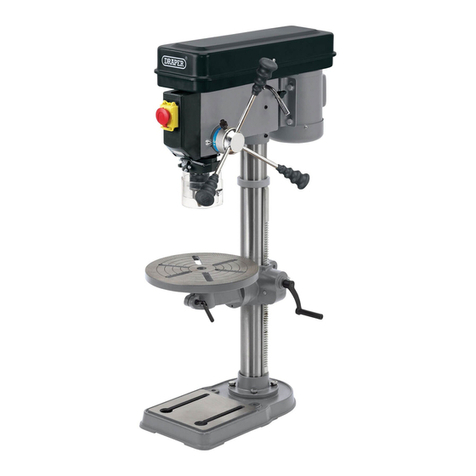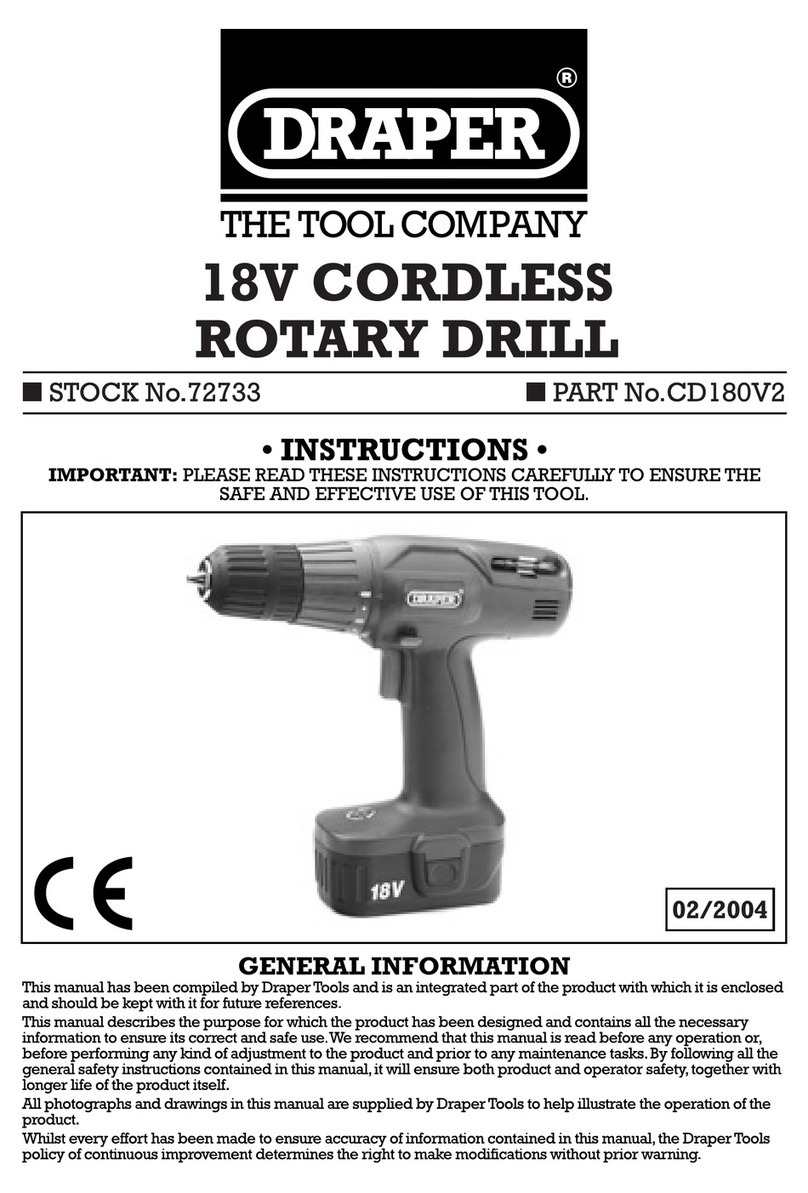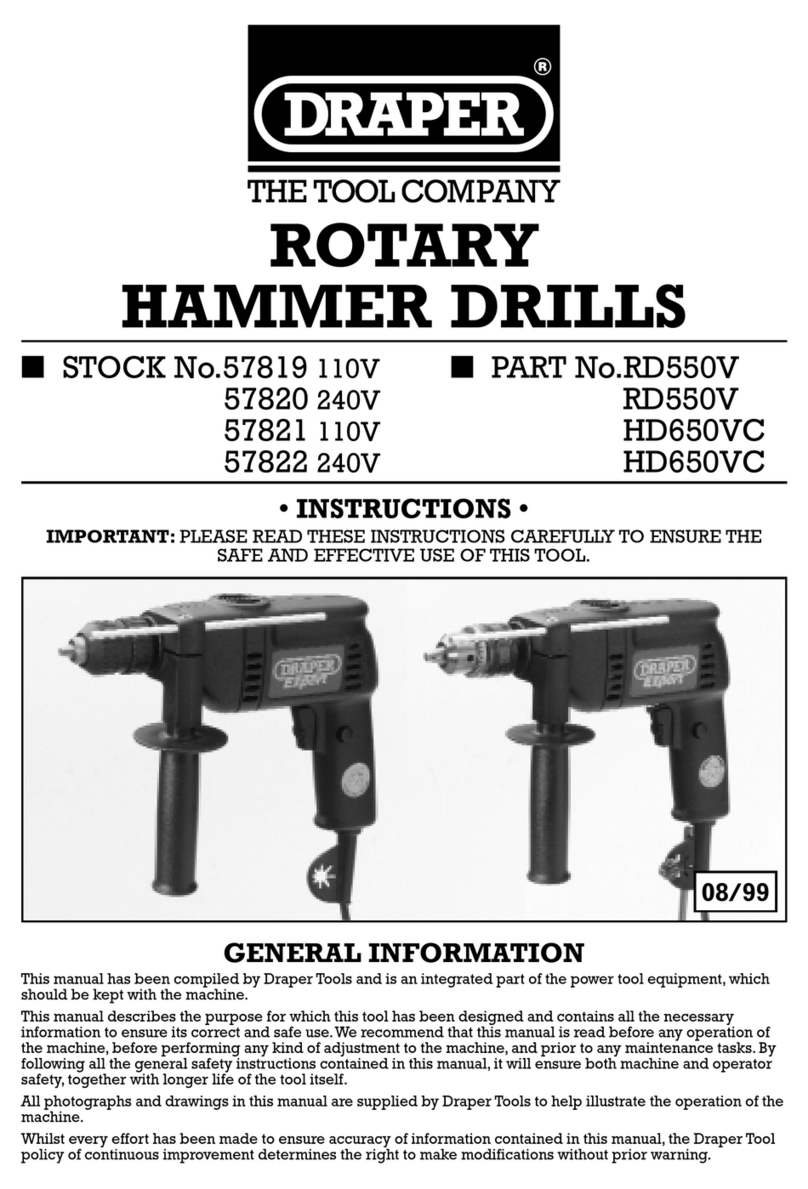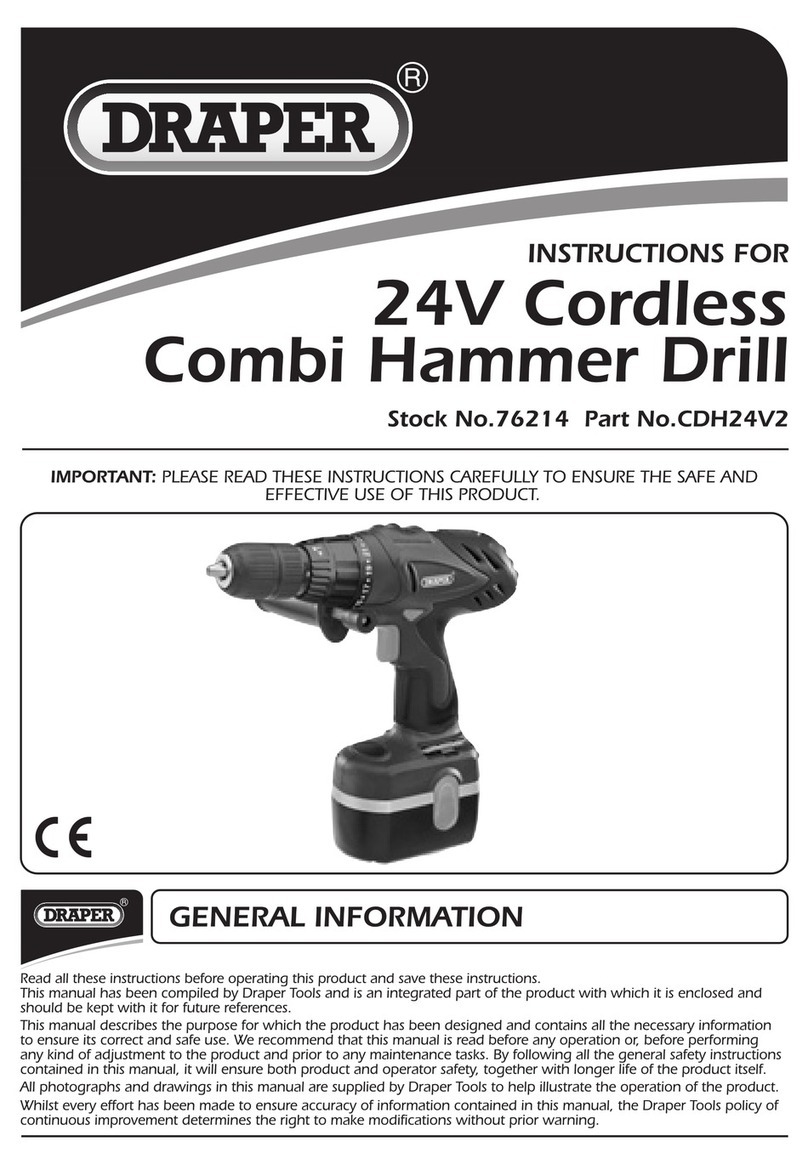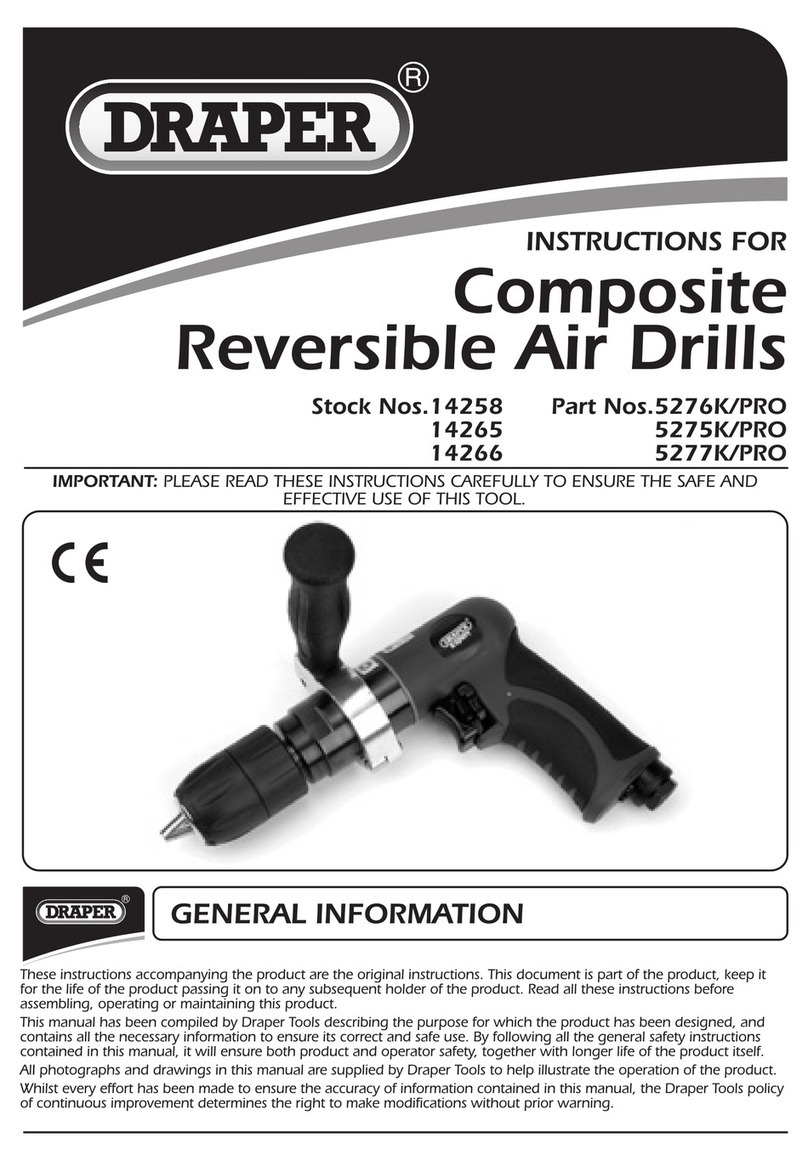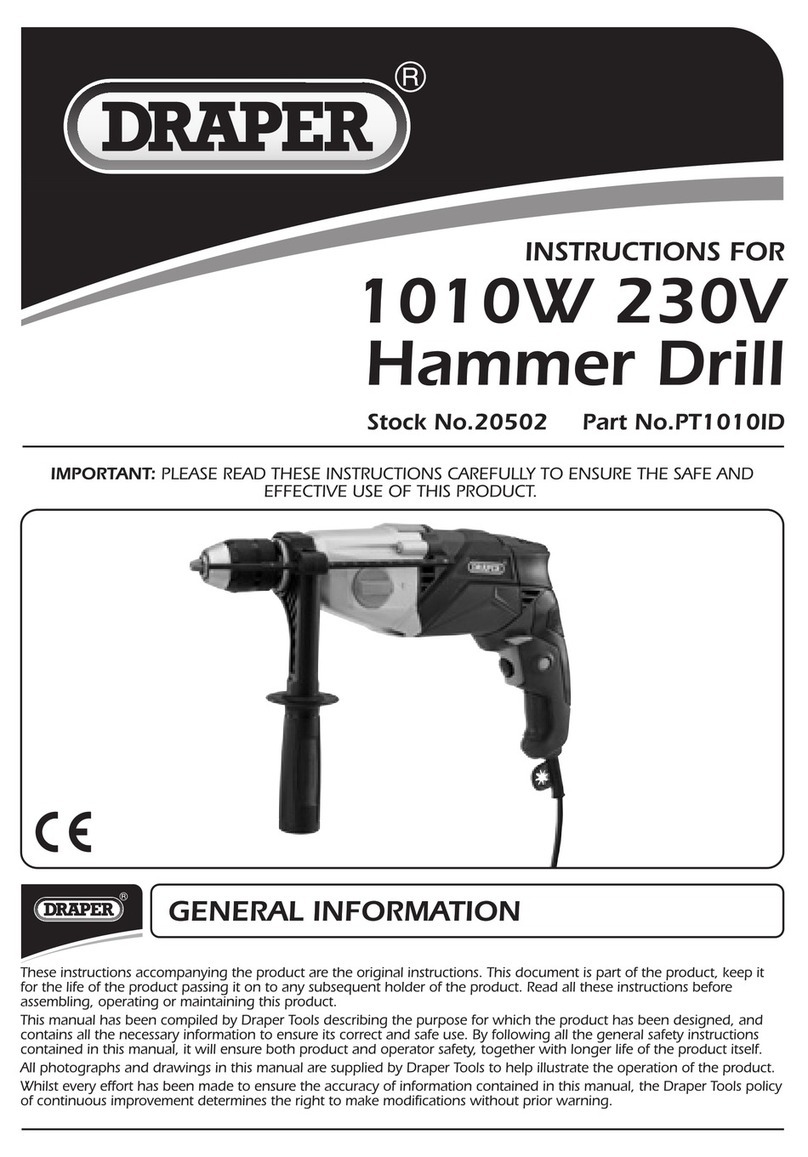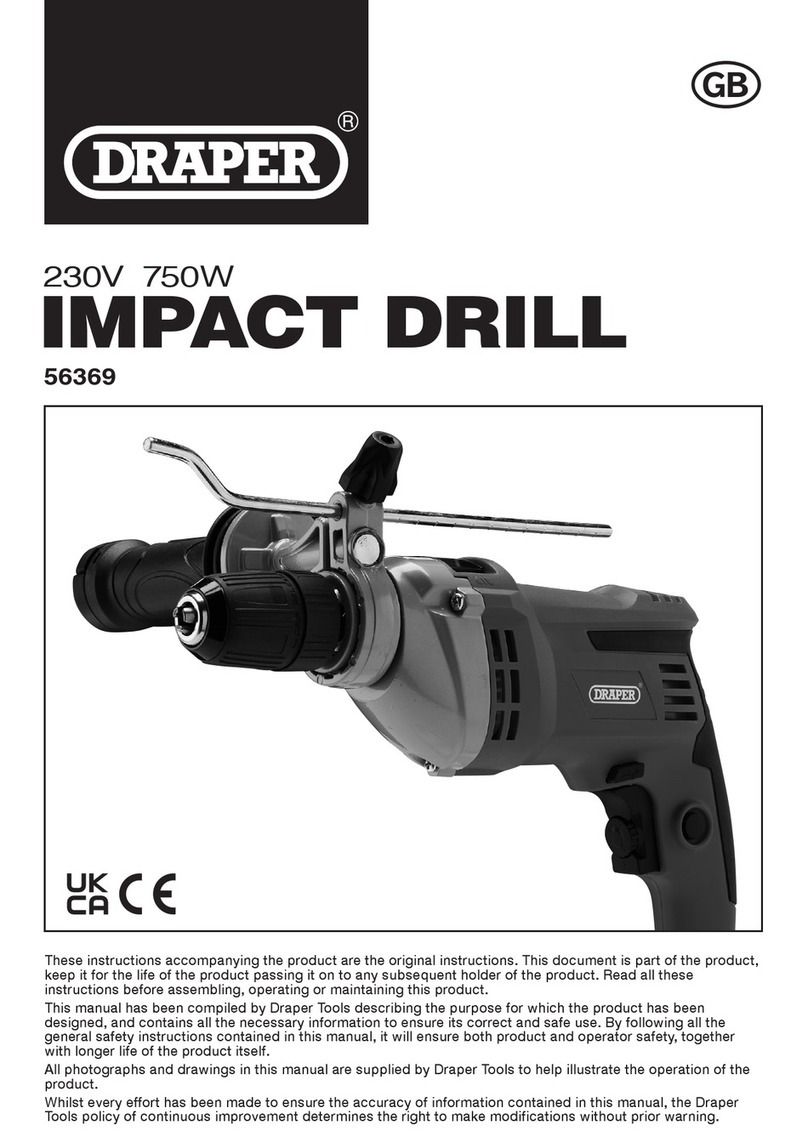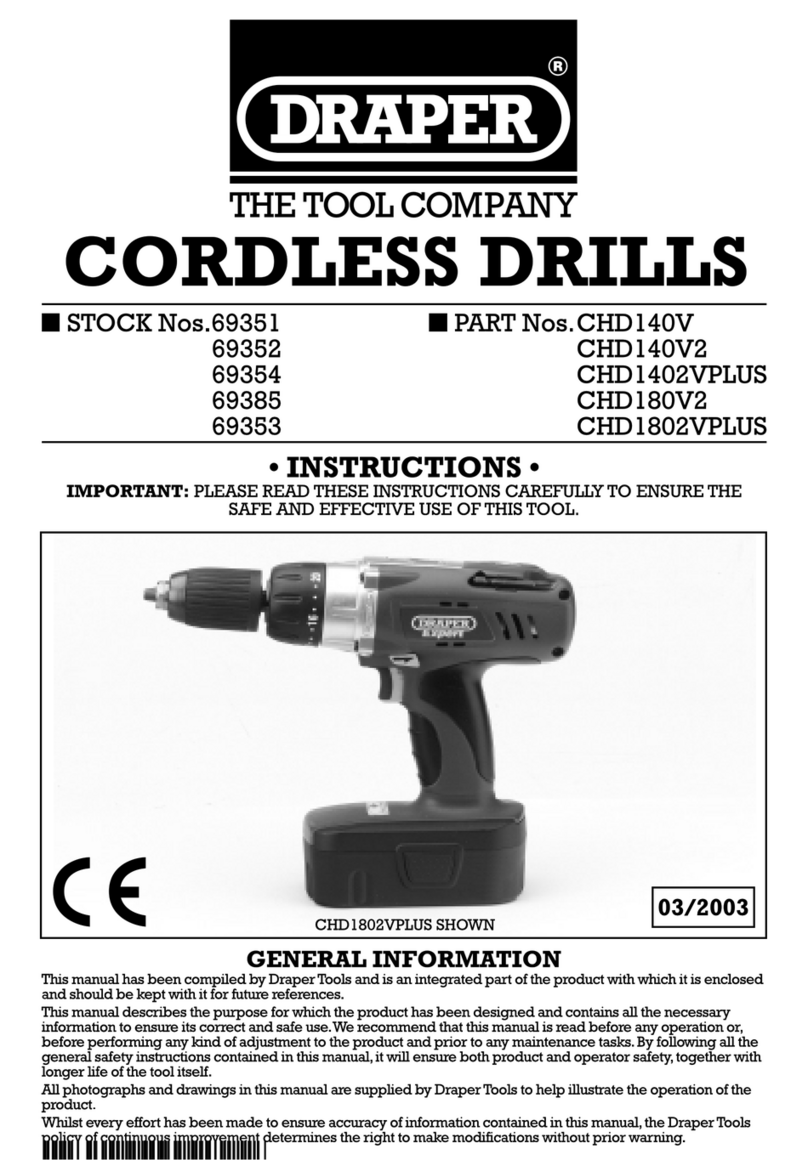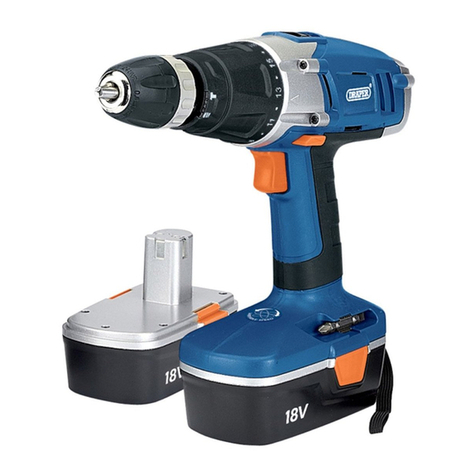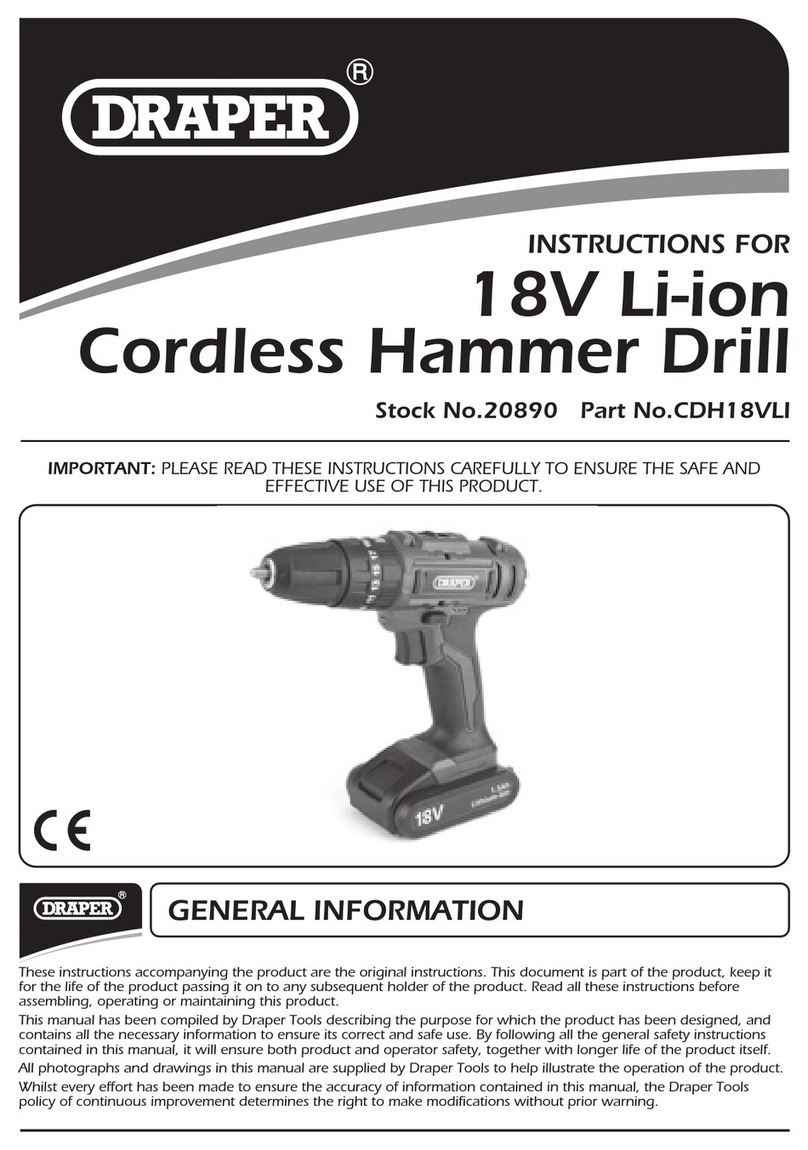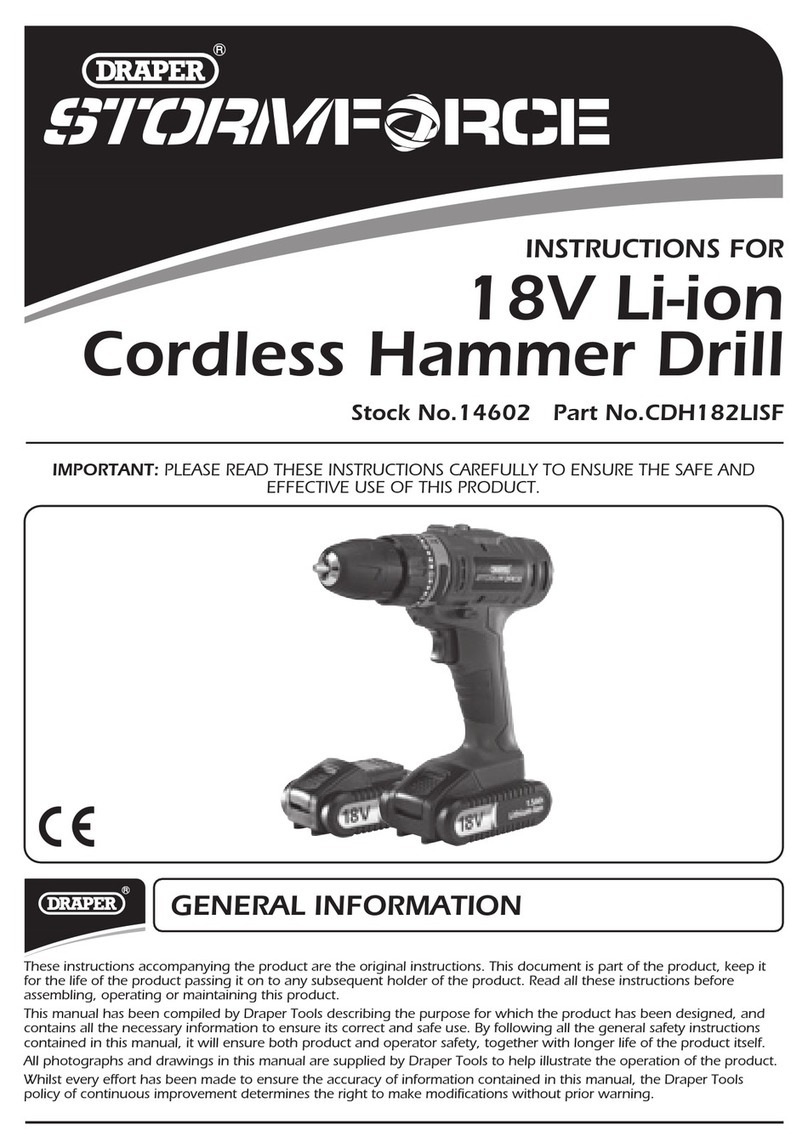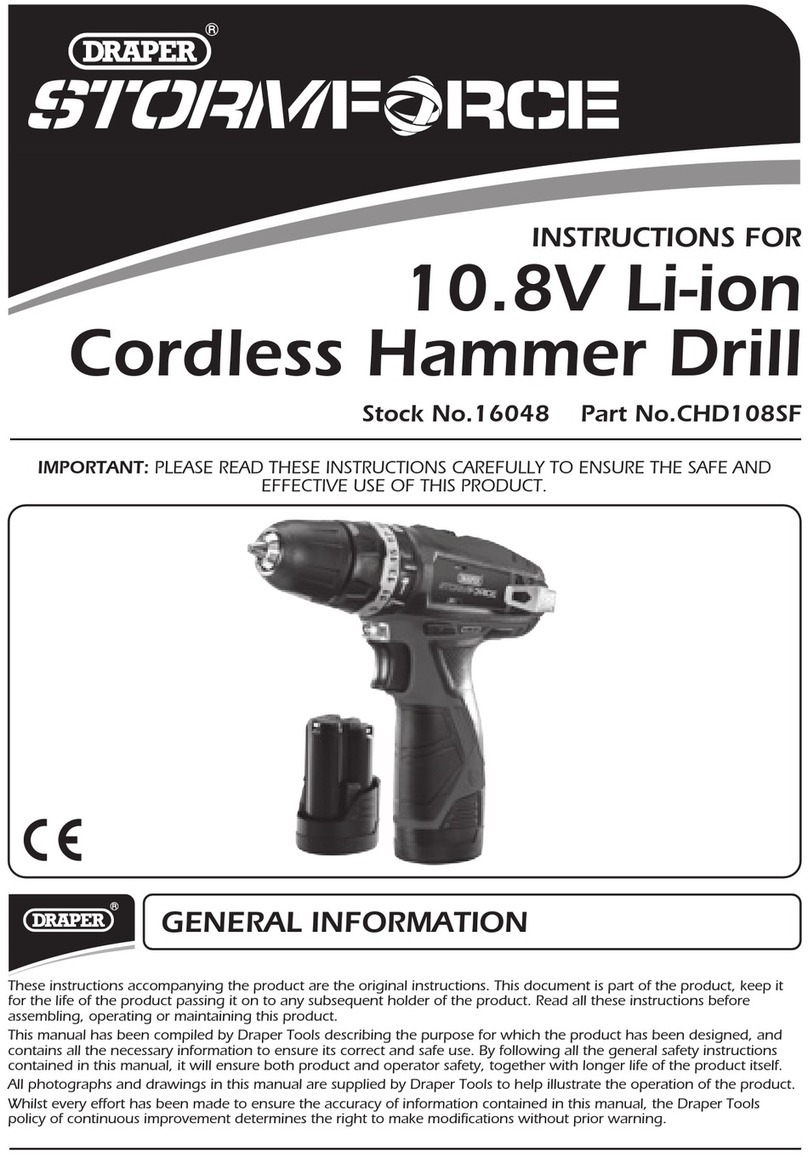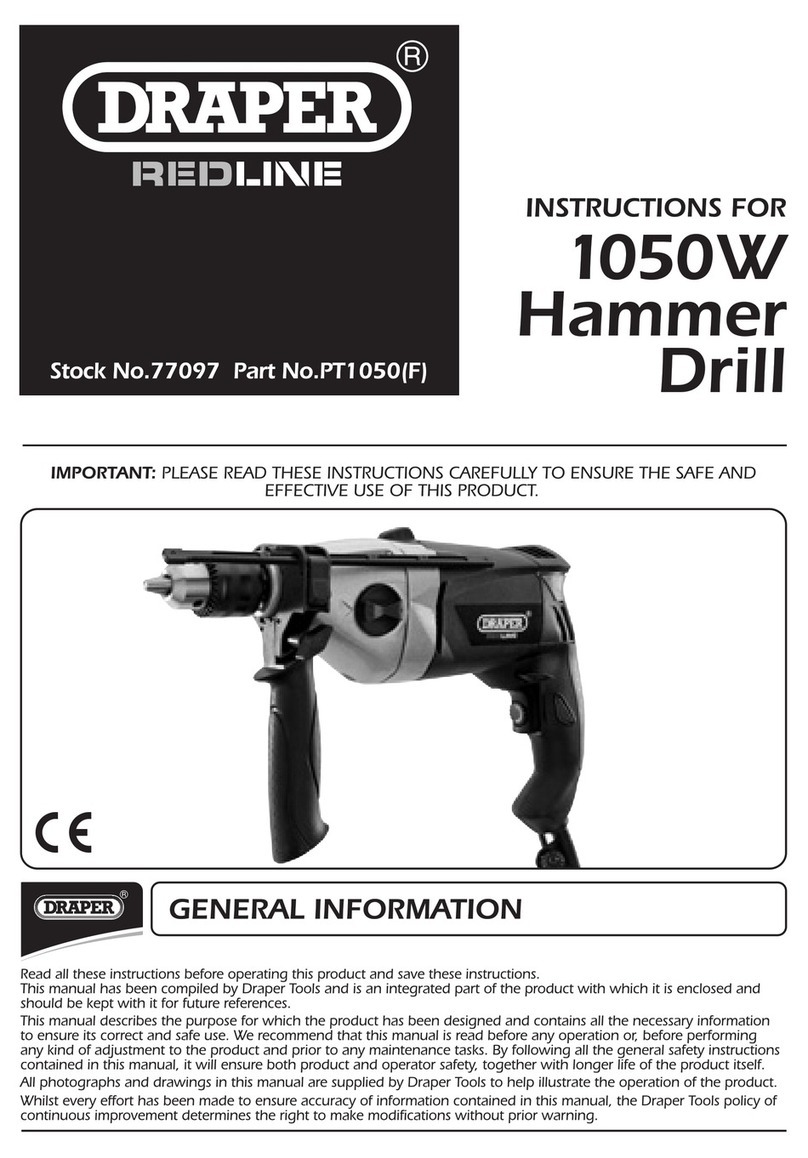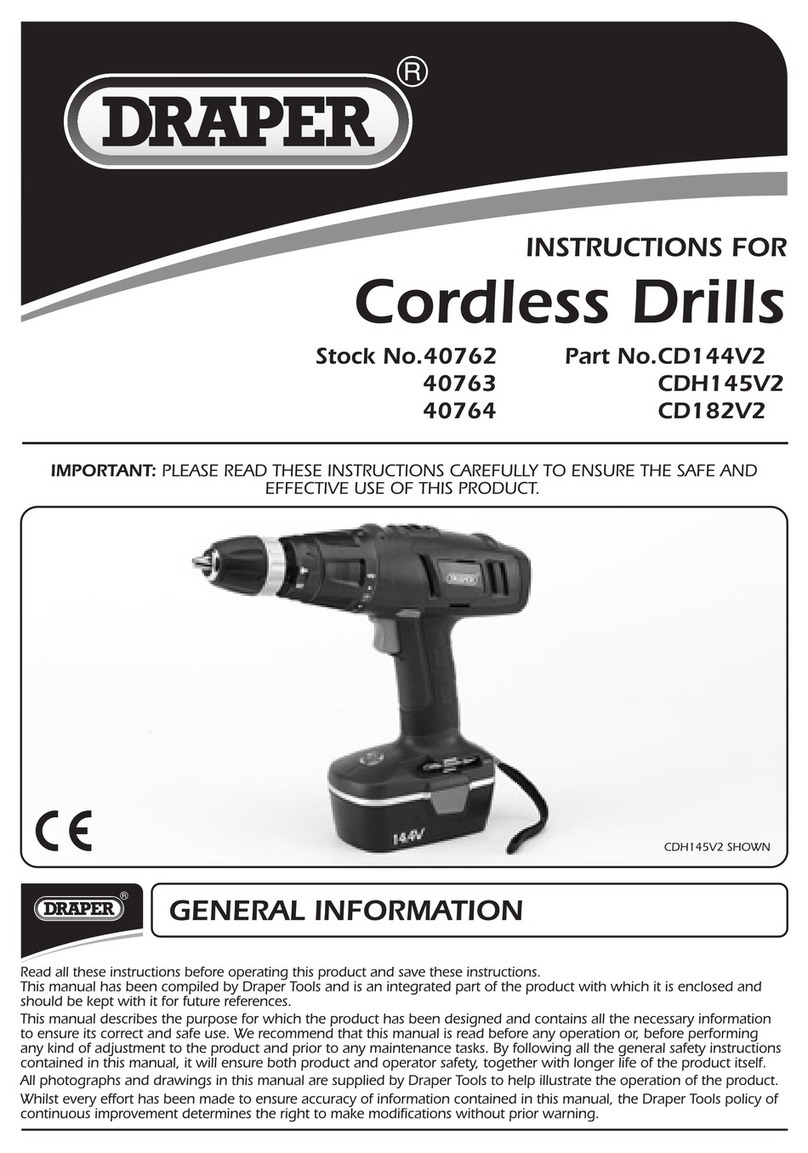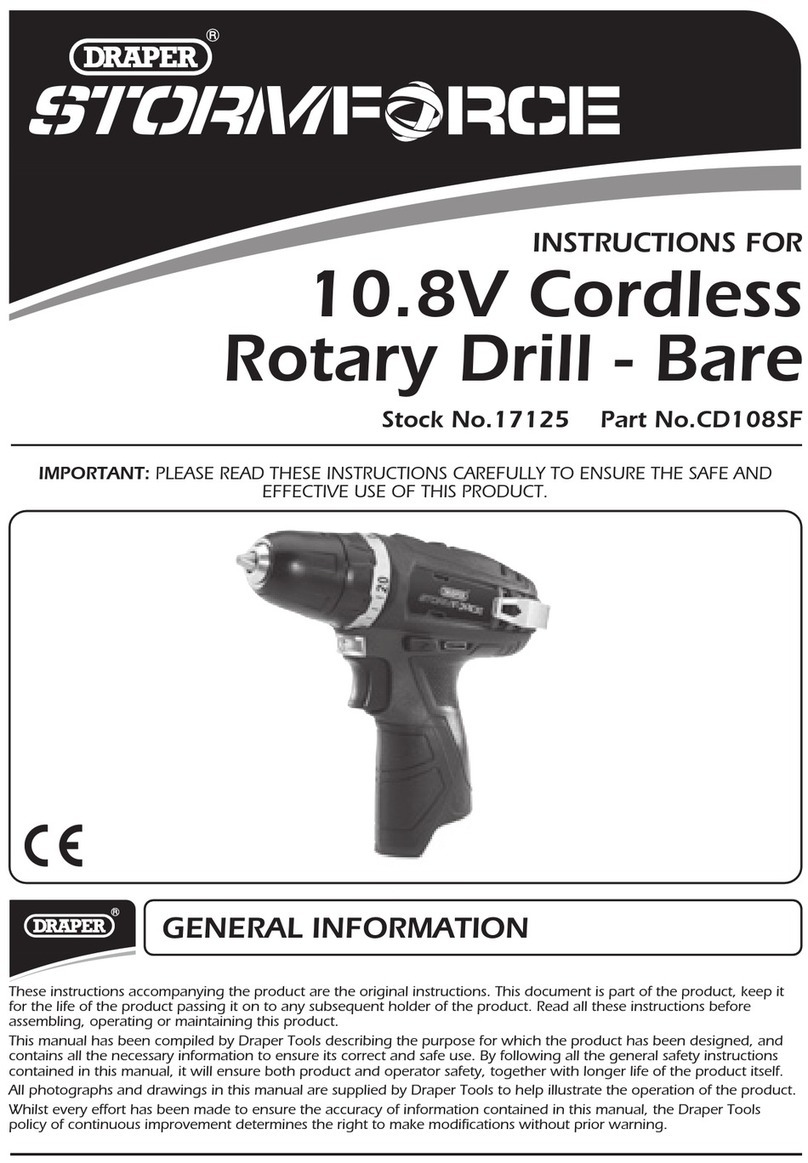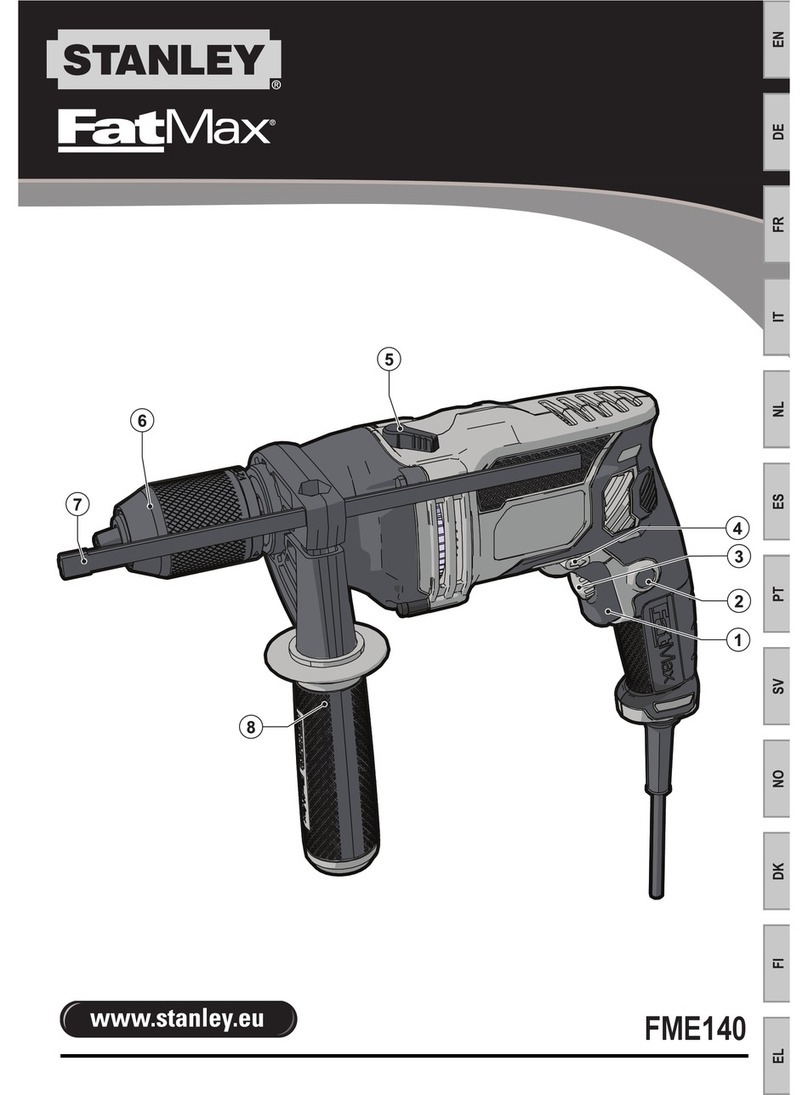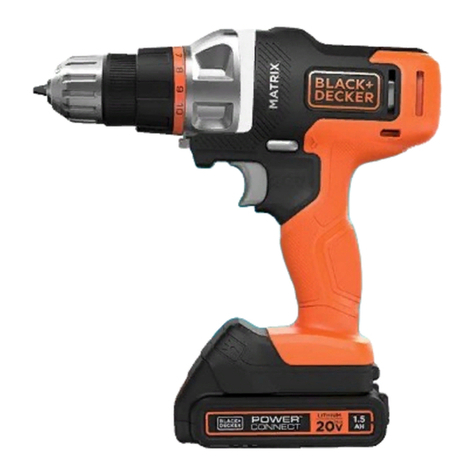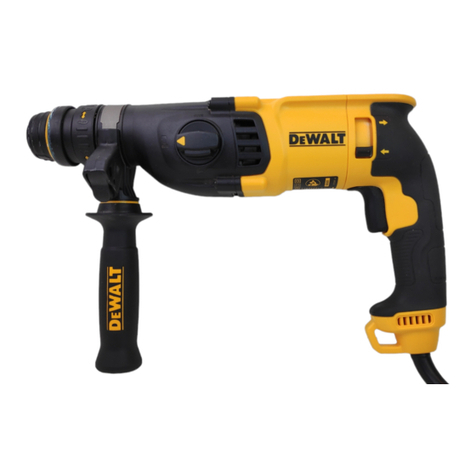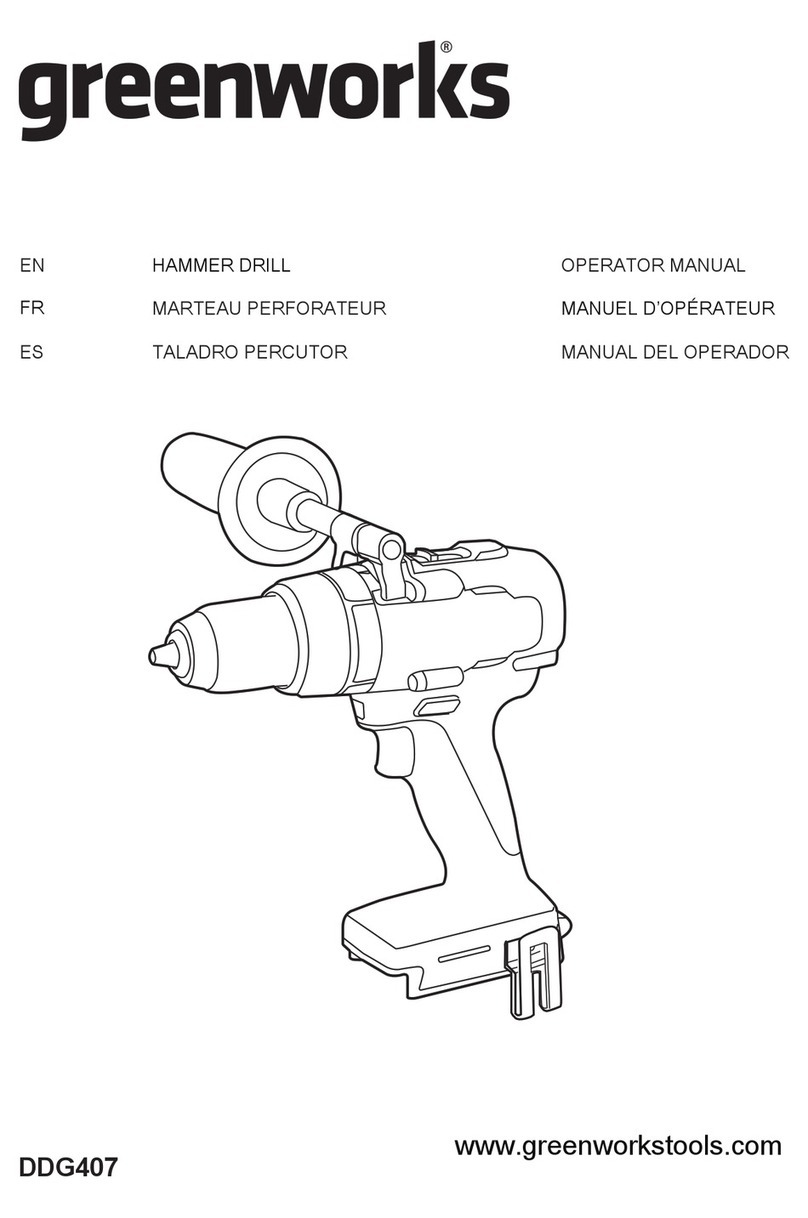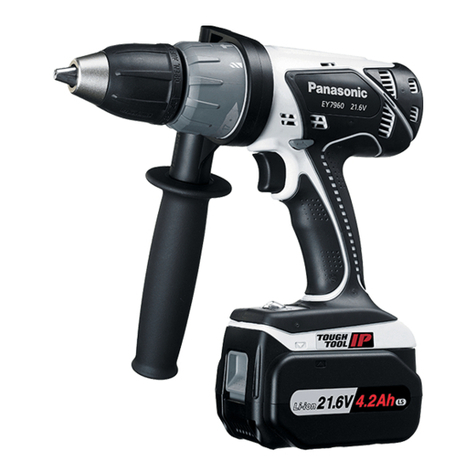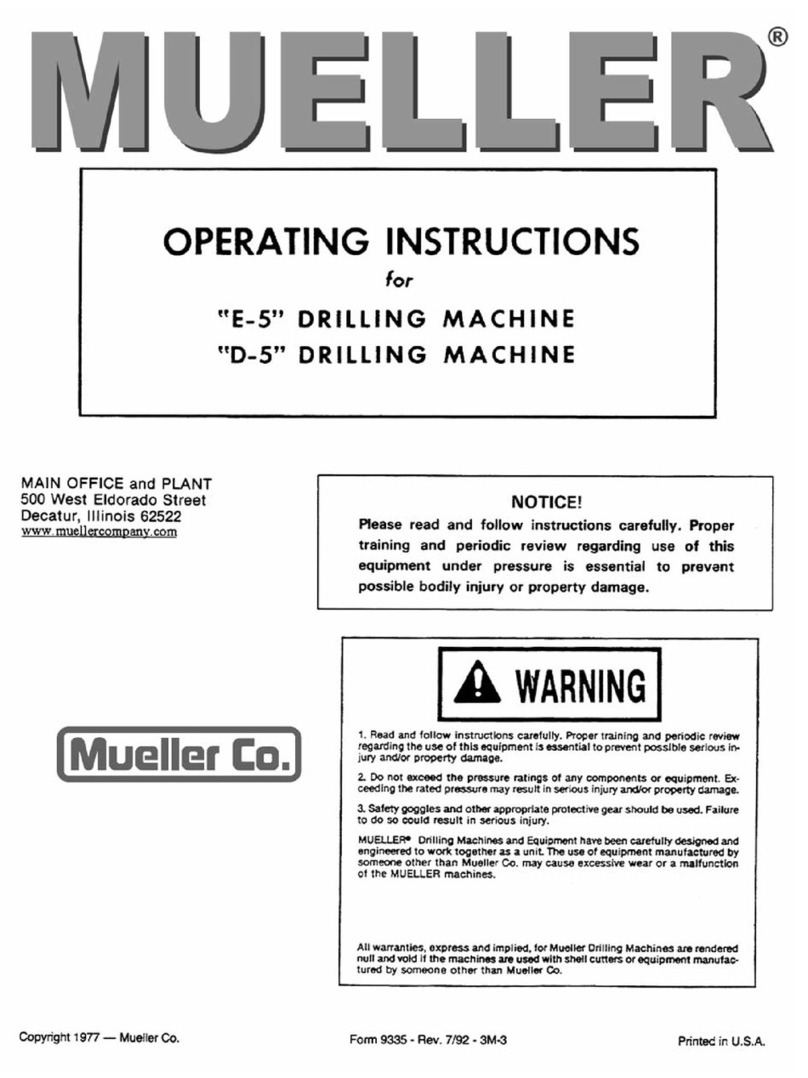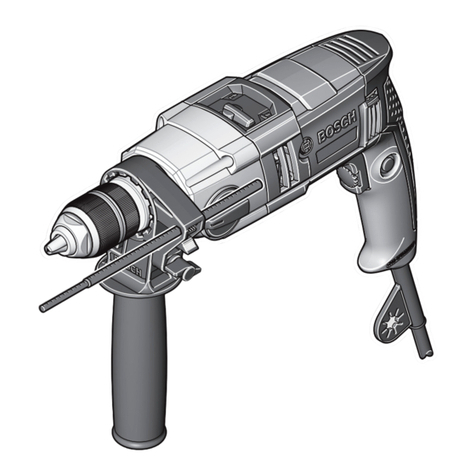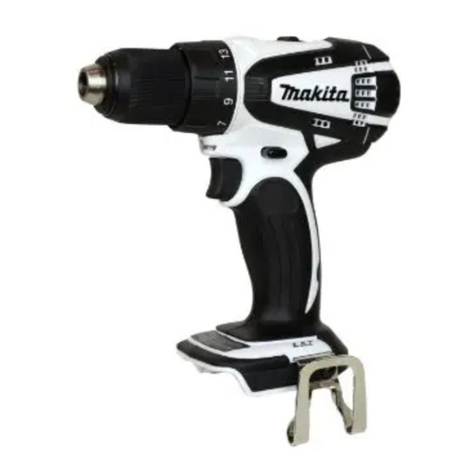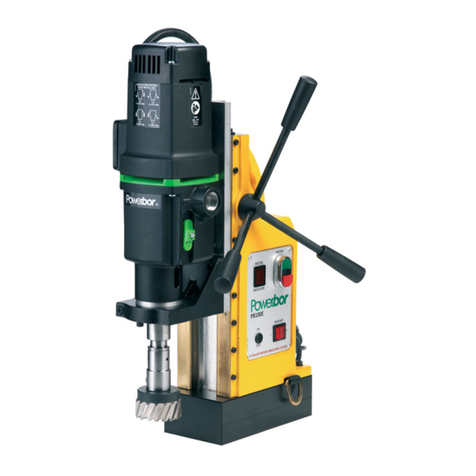
5. HEALTH AND SAFETY INFORMATION
Remove and check setting tools. Some machinery requires the use of additional tools or keys to set,
load or adjust the power tool. Before starting the power tool always check to make certain they have
been removed and are safely away from the machine.
Prevent unintentional starting. Before plugging any machine in to the power supply, make sure the
switch is in the OFF position. If the machine is portable, do not hold the machine near the switch and
take care when putting the machine down, that nothing can operate the switch.
Carefully select an extension lead. Some machines are not suitable for use with extension leads. If
the tool is designed for use outdoors, use an extension lead also suitable for that environment. When
using an extended lead, select one capable of handling the current (amps) drawn by the machine in
use. Fully extend the lead regardless of the distance between the power supply and the tool. Excess
current (amps) and a coiled extension lead will both cause the cable to heat up and can result in fire.
Concentrate and stay alert. Distractions are likely to cause an accident. Never operate a power tool if
you are under the influence of drugs (prescription or otherwise), including alcohol or if you are feeling
tired. Being disorientated will result in an accident.
Have this tool repaired by a qualified person. This tool is designed to conform to the relevant
international and local standards and as such should be maintained and repaired by someone
qualified, using only original parts supplied by the manufacturer. This will ensure the tool remains safe
to use.
5.2 ADDITIONAL SAFETY INSTRUCTIONS FOR HAMMER DRILLS
Important: Draper Tools Limited recommends that this machine should not be modified or used
for any application other than that for which it was designed. If you are unsure of its relative
applications do not hesitate to contact us in writing and we will advise you.
– Power tools shall not be used in potentially explosive atmospheres unless specifically designed
for that purpose.
– Unexpected tool movement due to reaction forces or breakage may cause injuries.
– Power tools shall be isolated from the energy source before changing or adjusting the inserted
tool.
Warning!
● Wear appropriate ear protection. Exposure to noise can lead to hearing loss.
● There is a risk of loose clothing, hair etc., being caught in the rotating spindle of the
power tool.
● Do not touch the drill bit or areas close to the drill bit immediately after use; they can still
be extremely hot, causing burns.
– Be sure the drill bit is securely in place before using the drill.
– There is a risk of release of toxic chemicals into the atmosphere when using certain materials.
Always be mindful to use the appropriate personal protective wear to help safeguard against
potential skin contact and dust inhalation. Always consult and follow the material supplier’s
safety guidelines.
– Adopt a suitable posture to counteract normal or unexpected movement of the power tool due
to reaction forces from the power assembly tool.
– Do not modify this product in any way. Any other application is considered misuse and will
invalidate the warranty.
- 7 -
- 14 -
9. BASIC HAMMER DRILL OPERATIONS
FIG.12
FIG.11
FIG.10
(3)
(5)
9.5 CHISELLING (ROTATIONAL)
– FIGS.10 – 11
– Rotate the drilling/chiselling selector
(7)
to the
rotational chisel selection setting.
– Switch the rotary/hammer selector
(5)
to the drill
and hammer setting.
With this combination of settings hammer action will
be in operation and also free rotation of the chisel
accessory. This operation is best suited for chiselling
out masonry/brickwork, concrete breaking
applications and demolition work.
9.6 TRIGGER SWITCH – FIG.12
Select the required function.
– Pull trigger
(3)
to activate the machine.
(7)
5. HEALTH AND SAFETY INFORMATION
5.1 GENERAL SAFETY INSTRUCTIONS FOR POWER TOOL USE
When using any type of power tool there are steps that should be taken to make sure that you, as the
user, remain safe.
Common sense and a respect for the tool will help reduce the risk of injury.
Read the instruction manual fully. Do not attempt any operation until you have read and understood
this manual.
Most important you must know how to safely start and stop this machine, especially in an emergency.
Keep the work area tidy and clean. Attempting to clear clutter from around the machine during use
will reduce your concentration. Mess on the floor creates a trip hazard. Any liquid spilt on the floor
could result in you slipping.
Find a suitable location. If the machine is bench mounted, the location should provide good natural
light or artificial lighting as a replacement. Avoid damp and dust locations as it will have a negative
effect on the machine’s performance. If the machine is portable do not expose the tool to rain. In all
cases do not operate power tools near any flammable materials.
Keep bystanders away. Children, onlookers and passers by must be restricted from entering the work
area for their own protection. The barrier must extend a suitable distance from the tool user.
Unplug and house all power tools that are not in use. A power tool should never be left unattended
while connected to the power supply. They must be housed in a suitable location, away locked up and
from children. This includes battery chargers.
Do not overload or misuse the tool. All tools are designed for a purpose and are limited to what they
are capable of doing. Do not attempt to use a power tool (or adapt it in any way) for an application it is
not designed for. Select a tool appropriate for the size of the job. Overloading a tool will result in tool
failure and user injury. This covers the use of accessories.
Dress properly. Loose clothing, long hair and jewellery are all dangerous because they can become
entangled in moving machinery. This can also result in parts of body being pulled into the machine.
Clothing should be close fitted, with any long hair tired back and jewellery and neck ties removed.
Footwear must be fully enclosed and have a non-slip sole.
Wear personal protective equipment (PPE). Dust, noise, vibration and swarf can all be dangerous if
not suitably protected against. If the work involving the power tool creates dust or fumes wear a dust
mask. Vibration to the hand, caused by operating some tools for longer periods must be protected
against. Wear vibration reducing gloves and allow long breaks between uses. Protect against dust and
swarf by wearing approved safety goggles or a face shield. These are some of the more common
hazards and preventions, however, always find out what hazards are associated with the
machine/work process and wear the most suitable protective equipment available.
Do not breathe contaminated air. If the work creates dust or fumes connect the machine (if possible)
to an extraction system either locally or remotely. Working outdoors can also help if possible.
Move the machine as instructed. If the machine is hand held, do not carry it by the power supply
cable. If the product is heavy, employ a second or third person to help move it safely or use a
mechanical device. Always refer to the instructions for the correct method.
Do not overreach. Extending your body too far can result in a loss of balance and you falling. This
could be from a height or onto a machine and will result in injury.
Maintain your tools correctly. A well maintained tool will do the job safely. Replace any damaged or
missing parts immediately with original parts from the manufacturer. As applicable, keep blades sharp,
moving parts clean, oiled or greased, handles clean, and emergency devices working.
Wait for the machine to stop. Unless the machine is fitted with a safety brake, some parts may
continue to move due to momentum. Wait for all parts to stop, then unplug it from the power supply
before making any adjustments, carrying out maintenance operations or just finishing using the tool.
- 6 - - 15 -
9. BASIC HAMMER DRILL OPERATIONS
9.7 SDS+ SYSTEM – FIGS.13 – 14
The tool holder
(1.2)
clamps SDS+ drill bits and
chisels without the need for a chuck key.
– Pull collar
(1.3)
back.
– Insert the bit. It may be necessary to rotate the
bit to ensure it engages correctly.
– Release the collar to lock the bit in place. Check
by pulling the bit to see if it’s firmly seated.
Important:
Always clean and lightly grease the tool
shaft before inserting into the chuck.
Take care that the dust protection cap is not
damaged. Allowing dust and debris inside the
holder will cause problems in the future.
– To remove a bit, slide the collar
(1.3)
to the rear
and pull out the tool.
Warning!
Bit will be hot after use.
9.8 DUST AND SWARF:
A correctly fitted dusk mask, suitable for the activity
and in accordance to the relevant standard, must be
worn.
For work activities involving exposure to fine wood
dust, a mask rated to at least FFP2 should be used.
Swarf produced by metal drilling is extremely sharp.
Take precautions when clearing swarf. The burr left
on the hole is also sharp and should be removed
with a suitable tool.
9.9 DRILLING WOOD, PLASTIC OR METAL
Although technically possible, Draper Tools do not recommend the use of this machine for drilling
into wood, metal or plastic. This machine is designed for drilling through brick, concrete and is
engineered to do so. This makes it an unwieldy machine to drill wood, metal or plastic and there
are tools that are far more capable of doing the job with a greater degree of control.
(3)
FIG.13
FIG.14
(1.2)
(1.2)
(1.3)
(1.3)
